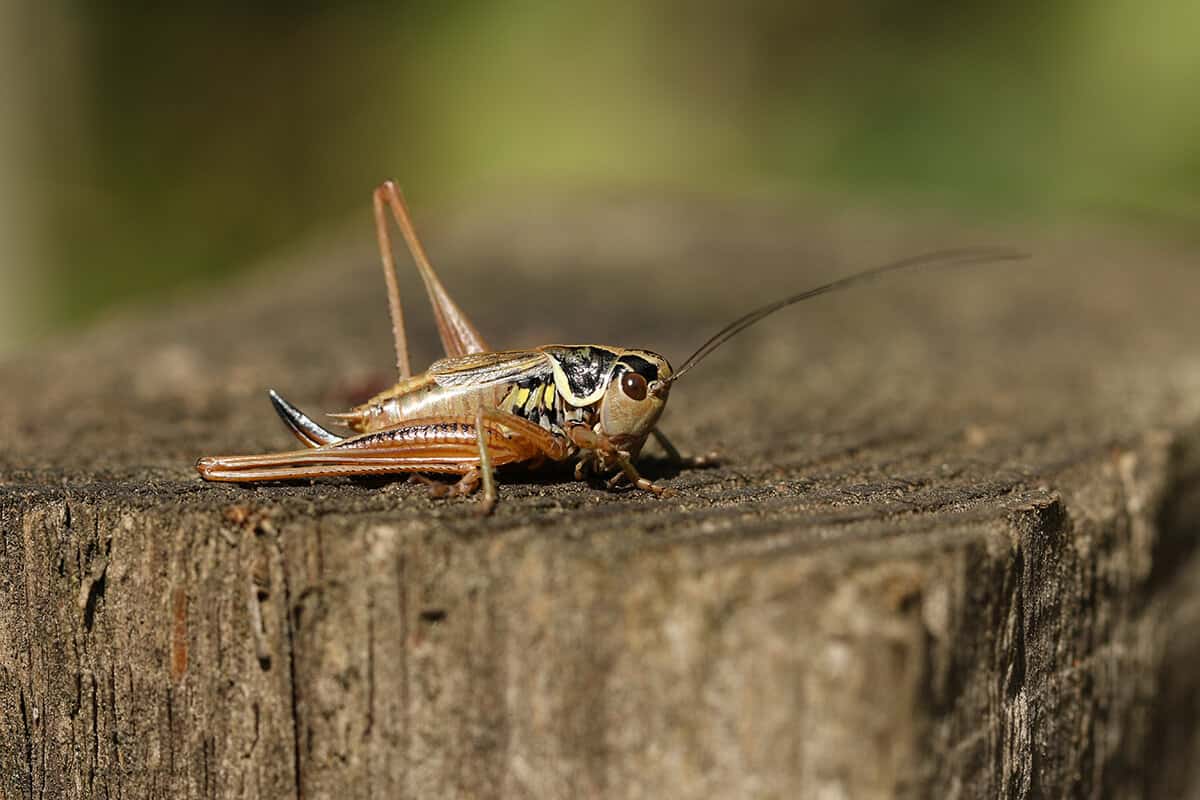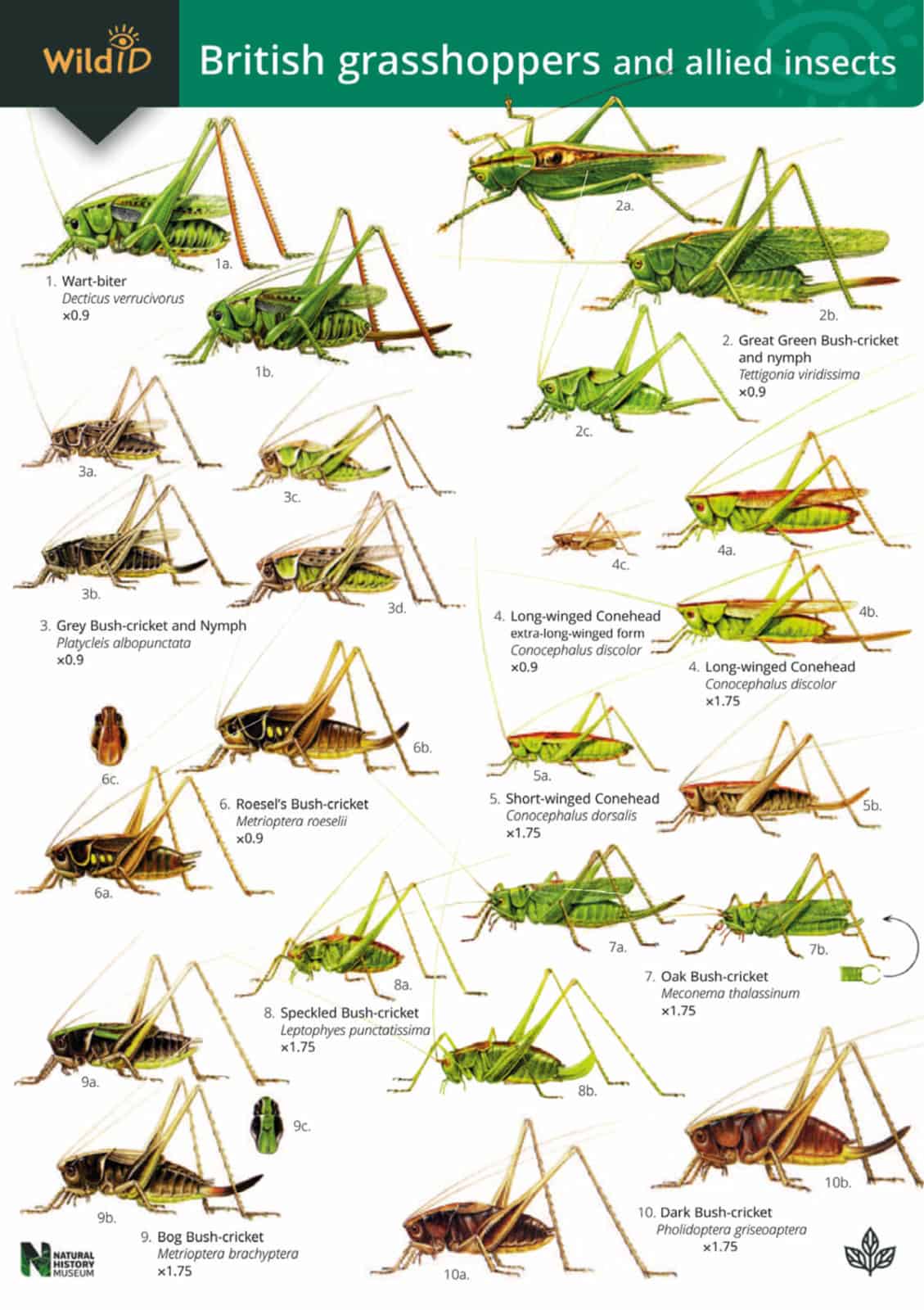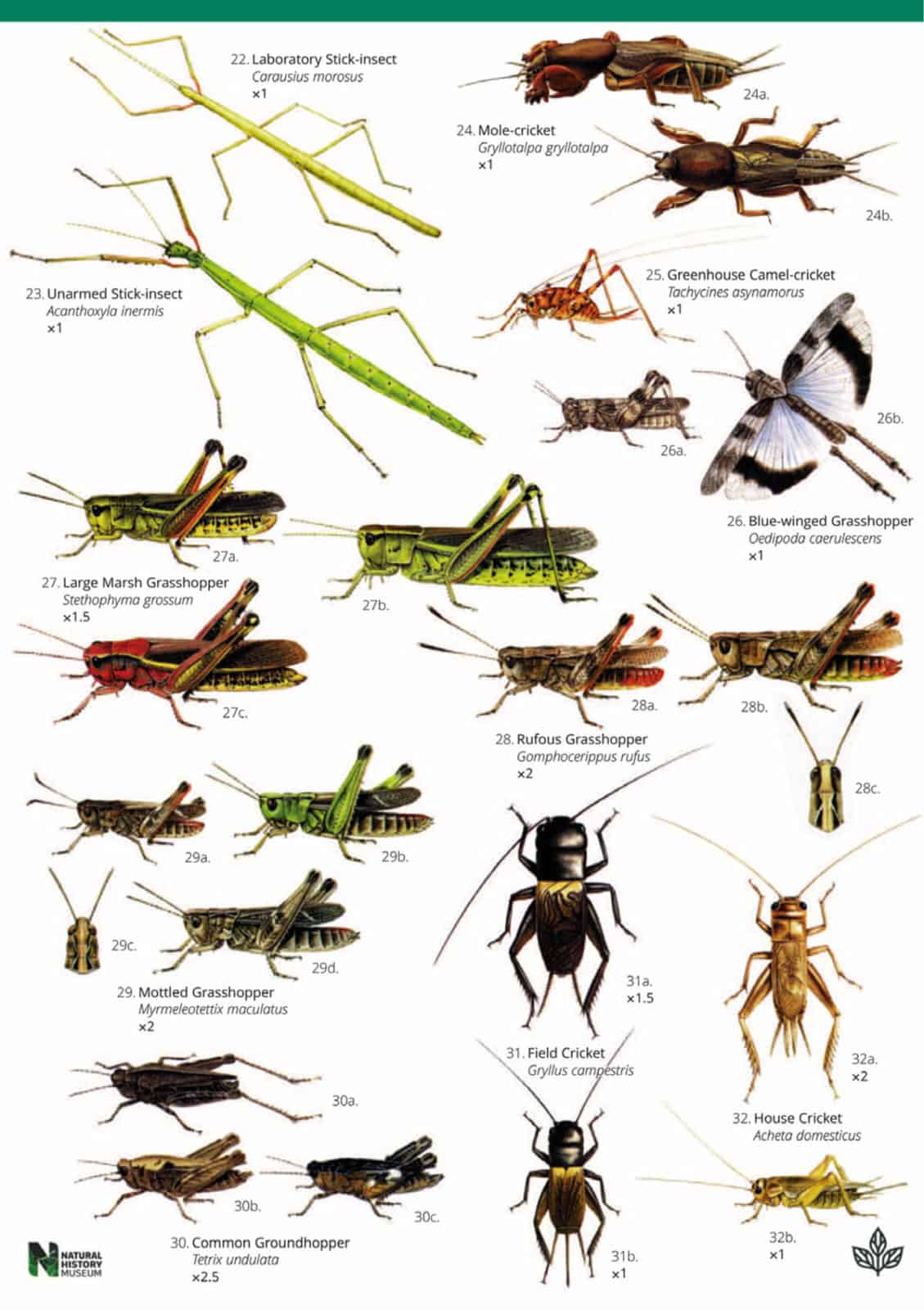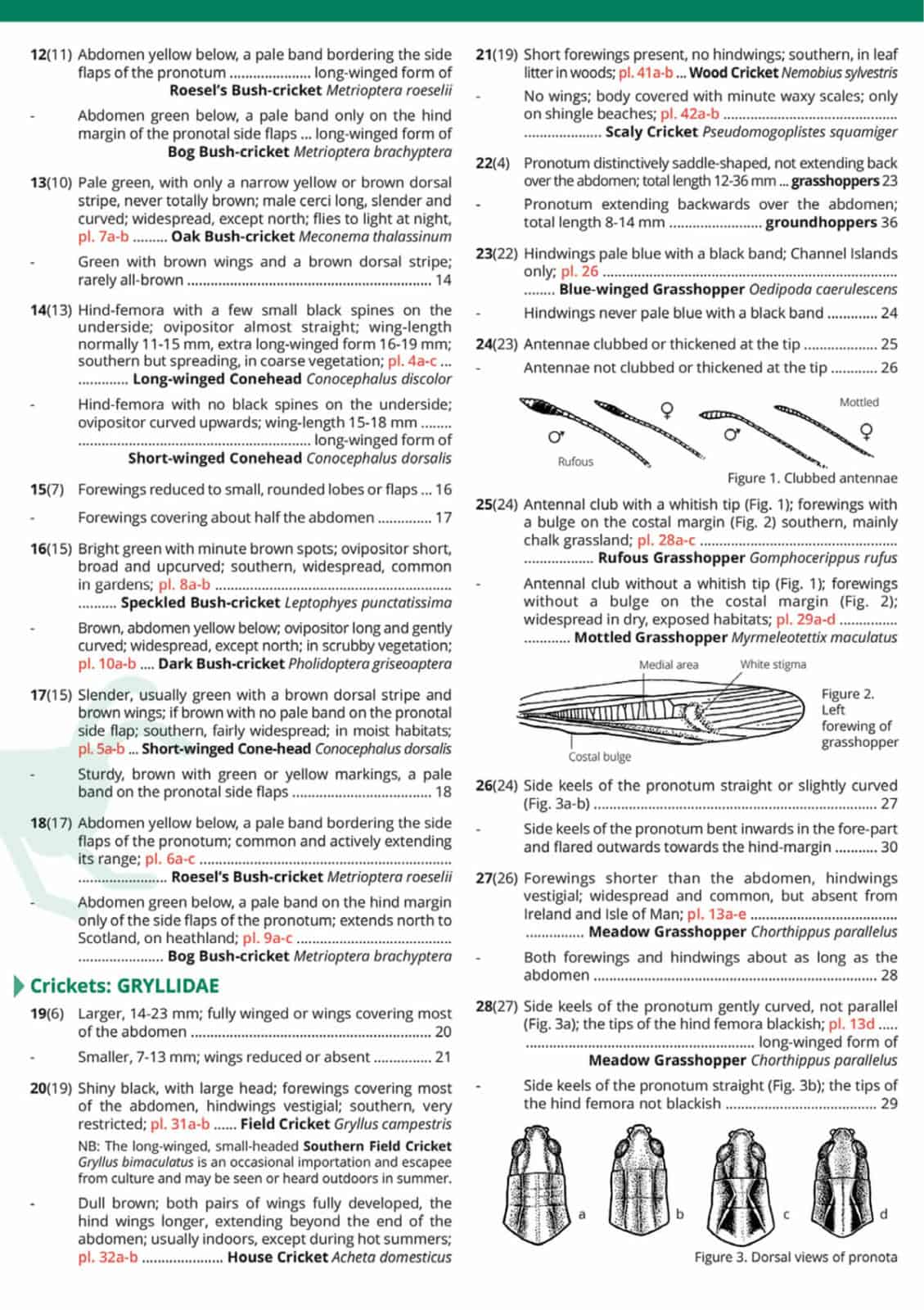Grasshoppers guide
The Grasshoppers guide features 50 species of grasshoppers, crickets, bush crickets, ground hoppers, cockroaches, earwigs and stick insects.
Colour illustrations of each species are grouped to help you distinguish between similar-looking species. On the reverse side there’s a full identification key to living adults, designed for use in the field. You don’t need any special equipment to use this key, although a hand lens is useful.
The chirping of grasshoppers and crickets is one of the sounds of summer. They can produce up to five different songs during courtship: normal song, courtship song, assault song, copulation song and the rivals’ duet. In general these insects are common in many habitats, and they play an essential role as a food source for birds, lizards and small mammals, and well as spiders. Crickets and bush-crickets can also help to control pests such as aphids. This is an exciting time to get to know the grasshoppers. Although many species only used to occur on the south coast (especially Cornwall), several species of these warmth-loving animals are now spreading to different parts of Britain and Ireland.
Technically grasshoppers, bush crickets and crickets make up the order Orthoptera. Their key characteristic is large hind legs containing muscles for jumping. Earwigs (order Dermaptera), stick insects (order Phasmida) and praying mantids (order Dictyoptera) are distinct groups. All species hatch from the egg as nymphs, which are tiny versions of the adult, but without wings. They grow by moulting through four or more stages (or instars).
The Grasshoppers guide was produced in partnership with the Natural History Museum.





